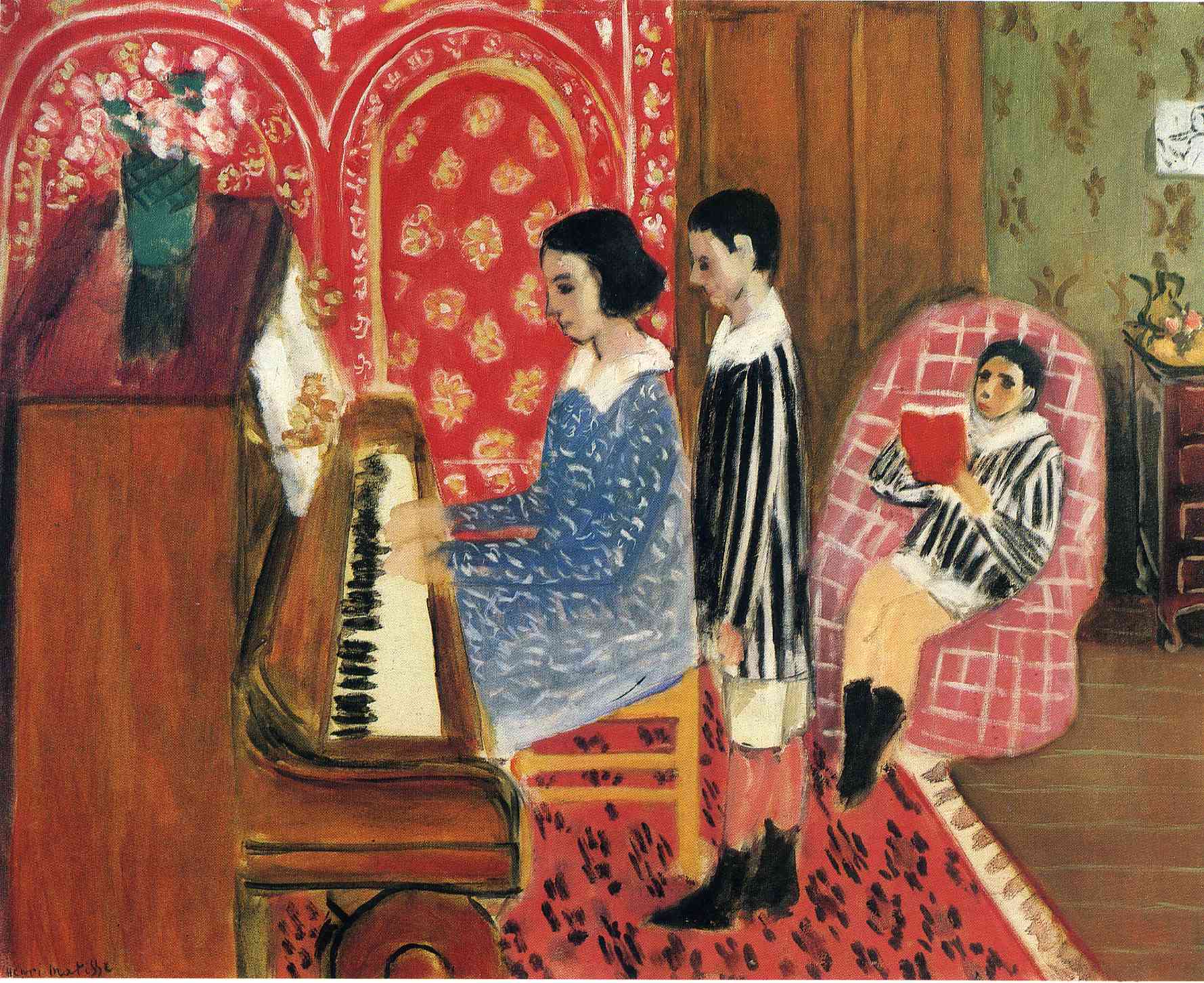art-Matisse.com
Henri Matisse 1869-1954
©Henri Matisse - The Piano Lesson 1923
 The Piano Lesson |
From Sotheby's auction house:
Painted in 1923, La Leçon de piano is one of the finest interior compositions from Matisse’s early Nice period, combining his skills as a colourist in conveying the splendour of his Mediterranean studio with an intimate portrayal of his three young sitters. The vibrantly coloured and highly patterned fabrics that make up the interior have become synonymous with Matisse’s art from the 1920s, and in the present composition they are complemented by the piano on the left, while the composition is centred around the figures of Henriette Darricarrère, Matisse’s favourite model of this era, and her two younger brothers.
Matisse established a permanent residence at 1 Place Charles-Félix in Nice in 1921 and his third-floor apartment and studio in this eighteenth-century building offered him magnificent views of both the town and the Promenade des Anglais along the sea front. Attracted to the rich atmosphere of this coastal town, the artist spent much of the subsequent decades here, producing some of the most iconic works of his career.
While in some of these works Matisse offers a glimpse of the resort and the sea beyond, often through a balcony or an open window, he also portrayed his models in a closed indoor setting. The intimacy of this arrangement allowed the artist to focus on the human form and to incorporate complex patterns into his compositions. La Leçon de piano is a beautiful example of Matisse’s Nice interiors, and displays the artist’s singular ability to capture his models in a natural pose, deeply absorbed in their activities.
This composition boasts all of the key elements of Matisse’s Nice period paintings, with its colourful patterning and gleaming white highlights. The artist created a powerful and dynamic composition by juxtaposing the straight lines of the piano, the door in the background and the two boys’ stripy shirts with the short, quick brushstrokes denoting decorative patterns of the red screen, the wallpaper and the carpet. The strong black-and-white pattern of the boys’ tunics is echoed in the keys of the piano. While in the companion painting Pianiste et joueurs de dames, now at the National Gallery of Art, Washington, D.C., the two boys are depicted absorbed in their own game, in the present work one of Henriette’s brothers is depicted standing behind her, seemingly lost in her music, while the other sits in an armchair reading a book. Another musical reference is found in the top right corner where a small sketch of a violinist hangs on the wall.